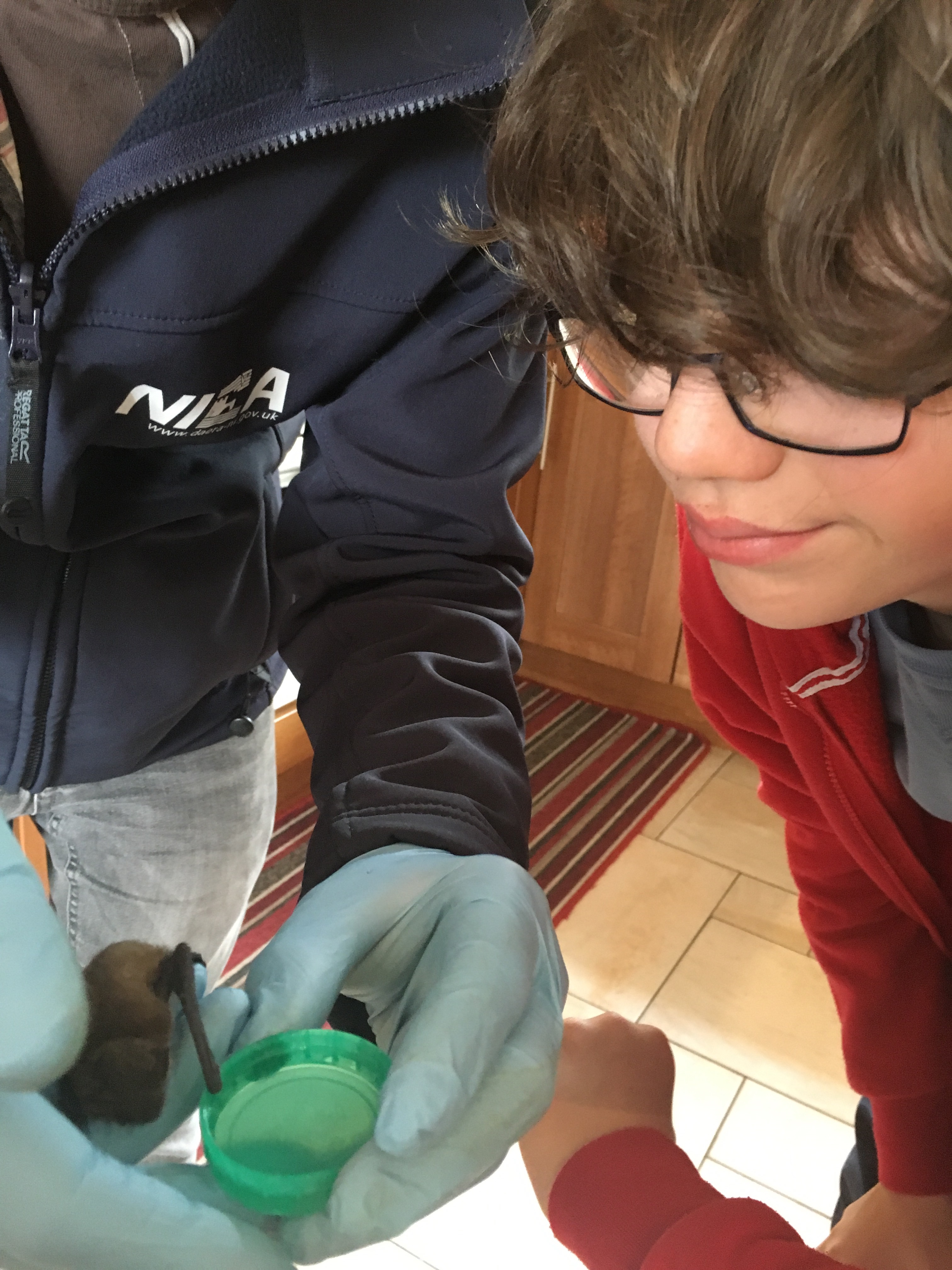
For the last few days I have had a special visitor in my room, a common pipistrelle bat (Pipistrillus pipistrillus). My room is the quietest in the house and so is a good place for our ailing bat to recover to good health, it’s a great companion to have and to hear its little squeaks is really comforting to me. It was found on an industrial estate factory in a small secluded corner covered in cobwebs, we didn’t know how long it had been grounded for, although the presence of cobwebs are pretty explanatory; or if it was sick or injured so my dad took it home and has been looking after it since. We discovered that it was a female so it was more important to give her the help she needs to recover.

At this time of year, bat pups and females have possibly left the maternity roost (a safe, warm hang out (sorry;) place for female bats to give birth and suckle their babies). Did you know that a bat’s reproductive system is very similar to the human one? There are variations between species but the ‘technicalities’ are all pretty similar. They begin the ‘roost’ period in early summer and they will birth their young after 6-9 weeks. Young are suckled by the mother for 4-6 weeks before they begin to forage for themselves, but do return to the roost with their mothers until they are big enough to survive on their own. At this time of year bats begin the mating process before hibernation begins in Winter. Their reproductive system is very interesting but I won’t get too into that now. Female bats are incredibly important to bat populations as they only give birth to one pup per year – that is why bat populations can be very precarious. Each pup is precious cargo and the female is a fantastic mother, she has to be! Female bats may also return to the same maternity roost site and although we are not sure that this bat had left the roost, if the rescue is successful she will need to be released in the area which she was found. It is not necessary to do this with males so much.
When looking after our female bat we feed it mealworms and let it drink water from a paintbrush;we gave it the water this way because in the wild it would usually get its water by licking the dew off leaves. It is absolutely wonderful to watch, up close a bat getting fed and nurtured, they are unbelievably cute and docile. They are amazing creatures and pose no threat to humans. They are beautiful animals. Here are some pictures and a video of us feeding the bat.
[wpvideo 5blZmoMO]
It has been amazing to once again have the honour to help look after a bat and learn from my dad. Its endearingly cute face makes it incredibly hard to say goodbye, but it is still a wild creature and must return from where it came from, and I will enjoy the last few days it has with us. There is something truly magical abut seeing a bat get released. It unfurls its slightly translucent wings, jumping off my fathers still hand and twirling of into the night; a ballerina of the air. I hope this rescue is successful but we also have to prepare ourselves for the worst, they are achingly delicate and fragile. This is the first female I’m aware of that we have rescued, keep everything crossed for her whilst she builds up her energy for her release as soon as possible.
My dad is a licensed bat worker, this is a completely necessary factor as they are a protected species! If you find a bat please inform your local bat rescue centre. Our bats are looked after by volunteers from the Northern Ireland Bat Group.
Read more about batty adventures here and here
It’s back to school for me tomorrow but I’ve been writing a blog all about my summer adventures too – a lot has happened!
Thanks as always for reading
Dara

12 Responses
Thanks, Dara, love that video! We got one of the Discovery ‘bat detectors’ some time ago, and love hearing the sounds, especially when the moth trap is out! Only very basic, but it works. Have a good term back at school.
Another fascinating and exciting post! We have a bat detector too, and enjoy trying to distinguish between the different species. (I’m not very good at it, sadly.) What a privilege to be able to watch this bat so closely, Dara. Let’s hope she survives. At least you have given her as much support as possible.
Good luck for the new school year 🙂
Thank you, Sandra. Unfortunately the bat passed away, the internal injuries were obviously severe. I was so upset, but it comes with the territory I guess.
Dara ????
Yes, indeed it does, Dara. You tried your best – which is more than many can manage.
Hope your bat pulls through!
It didn’t make it. We had her for a while which was really hard, it must’ve had internal injuries. Devastated:((
Aww poor thing! At least you tried. You made it feel comfortable! x
Thank you, I hope so! Dara ????
How wonderful to get so close to a bat! They are amazing creatures and also very cute. I went to a workshop on bats some years ago and got to meet a few though I’m not licensed to handle them. I have a bat detector and I sometimes help with emergence counts at a pipistrelle maternity roost.
That’s brilliant. Unfortunately we lost the bat. Devastated :((
I know, I saw your Tweet but after I had written the comment. It’s sad, but I know it’s not going to put you off trying again next time.
Absolutely heartbreaking when you lose an animal you’ve tried to save. I’m sorry for your loss.